
CAPE CANAVERAL — A military communications satellite, built with international funding from Canada, Denmark, the Netherlands, Luxembourg and New Zealand, has been stacked atop a Delta 4 rocket to launch into a worldwide information-relay network operated by the U.S.
WGS 9, the ninth installment of the Wideband Global SATCOM communications satellite system, will be boosted into a super-synchronous transfer orbit by the United Launch Alliance Delta 4 Medium+ (5,4) configured rocket with four strap-on solids.
Liftoff is planned for March 8 during a window of 6:48 to 7:53 p.m. EDT (2248-2353 GMT).
The allies bought this satellite in exchange for access to the planet-spanning constellation, similar to the groundbreaking deal with Australia that paid for the construction and launch of WGS 6.
“Each of the partners receive resources commensurate with their investment with WGS 9…Commensurate investments from these partners equate to approximately 3 percent of the WGS constellation bandwidth,” according to answers provided by the Air Force’s Space and Missile Systems Center.
The international participation gives communications interoperability between allied forces, funds expansion of the constellation and allows each partner nation to make a modest investment to receive immediate access to worldwide services that would be too expensive to construct on their own.
The WGS 9 deal was signed in 2012 to begin construction of the satellite.
“In accordance with the terms of the partnership, the international partners gained access to the WGS constellation upon enactment in 2012.”
WGS is the Department of Defense’s highest capacity communications satellite system. The spacecraft create a global grid to provide the needed coverage and connectivity in support of operations by U.S. and allied forces around the world.
Boeing builds the WGS satellites, which began launching in 2007.
The new bird, valued at $424 million, will be maneuvered into a circular geosynchronous orbit 22,300 miles above the equator to enter service from an undisclosed position.
Just like WGS 8 launched in December, No. 9 carries the second Wideband Digital Channelizer at the heart of its communications package, enabling a 90 percent improvement in available bandwidth compared to previous sister-satellites.

Already shrouded in the rocket’s 47-foot-tall, 17-foot-diameter composite nose cone, the WGS 9 spacecraft was hauled to Complex 37 overnight and hoisted atop the Delta 4 launch vehicle today.
The fully assembled rocket stands 217 feet tall.
“The international partners funded the procurement of the ninth WGS satellite. The United States funded the launch, operation and sustainment of WGS 9,” according to SMC.
The satellite was flown to Florida in early January from Boeing’s manufacturing facility in El Segundo, California. After arriving, it was taken to the commercial Astrotech processing facility to undergo pre-flight preps.
Final testing, loading of maneuvering propellant and encapsulation in the Delta 4’s nose cone was accomplished with the satellite.
Today’s transfer to the pad saw the 13,000-pound satellite move from Titusville, through the Kennedy Space Center and over to Cape Canaveral Air Force Station’s Complex 37.
Since rolling from its hangar a month ago, the Delta has undergone attachment of the four solid boosters and a pre-launch testing campaign. A fueling exercise was performed just last week.
Delta 377 will be the rocket family’s first of 2017.
Quelle: SN
---
Update: 15.03.2017
.
Favorable weather outlook for Friday’s twilight Delta 4 launch from Florida

CAPE CANAVERAL — Air Force meteorologists are expecting good weather to launch the Delta 4 rocket with a military communications satellite when the sun goes down Friday evening at Cape Canaveral.
Liftoff of the United Launch Alliance booster carrying the Wideband Global SATCOM 9 spacecraft for the U.S. Air Force is scheduled to occur at 7:44 p.m. EST (2344 GMT). The launch window will remain open for 74 minutes to 8:58 p.m. (0058 GMT).
The chances of allowable weather stand at 90 percent, with only a slight concern for liftoff winds during the launch opportunity.
“A high pressure area will gradually move into the Southeast U.S. Thursday and Friday, and as this occurs, the pressure gradient will slacken and winds will decrease,” forecasters at the 45th Weather Squadron say.
“Weather is generally favorable for launch.”
The launch time conditions are expected to include only scattered clouds, good visibility, ground winds from the east at 10 gusting to 15 knots, a relative humidity of 67 percent and a temperature of 63 degrees F.
Saturday’s backup launch window, if needed, should have 80 percent favorable weather, forecasters say.
An on-time liftoff at the opening of the window would occur 12 minutes after sunset but well within twilight conditions.
The closest free public viewing location is along Route 401 in Port Canaveral, some 8.6 miles from the launch pad, according to LaunchPhotography.com.
The WGS 9 spacecraft is an international contribution to the U.S. military’s highest-capacity, worldwide communications satellite constellation. Canada, Denmark, the Netherlands, Luxembourg and New Zealand funded construction of this satellite in exchange to bandwidth from the entire global network.
The Boeing-built WGS network provides high-volume communications anytime, anywhere to soldiers, ships, aircraft and drones.
The final closeouts of vehicle compartments are underway ahead of the Launch Readiness Review on Tuesday and the countdown starting Wednesday morning.
Quelle: SN
---
Update: 16.03.2017
.
Delta 4’s military launch bumped by commercial SpaceX flight, but good weather expected

CAPE CANAVERAL — With the SpaceX scrub earlier this week and the time needed to convert the Eastern Range over to the Delta 4, liftoff of that rocket carrying an internationally-purchased military communications satellite for the Air Force has been bumped to Saturday evening.
Liftoff of the United Launch Alliance Delta 4 carrying the Wideband Global SATCOM 9 spacecraft is scheduled to occur at 7:44 p.m. EDT (2344 GMT). The launch window will remain open for 75 minutes to 8:59 p.m. (0059 GMT).
After SpaceX scrubbed its launch early Tuesday, the company invoked its backup Range date of early Thursday.
Despite the 43-hour turnaround between SpaceX’s next attempt and the Delta 4’s scheduled launch, the Range ruled late Tuesday it could not support the military satellite flight on Friday evening. That automatically moved the Delta 4 to Saturday.
The Eastern Range provides the required safety and tracking services for all launches from the Space Coast.
The chances of allowable weather for the Delta 4 on Saturday stand at 90 percent, with only a slight concern for cumulus clouds during the launch opportunity.
“The next cold front will be dropping southward into northern Florida late on Saturday, but will remain relatively weak and not track through Central Florida until Sunday morning. Weather should be favorable for MST rollback during the day and for the evening launch,” forecasters at the 45th Weather Squadron say.
“The primary concern for launch is cumulus clouds forming in advance of the front, however they should be of minimum vertical development and very isolated.”
The launch time conditions are expected to include only a few low-level clouds and some scattered high clouds, good visibility, ground winds from the southwest at 10 gusting to 15 knots, a relative humidity of 64 percent and a temperature of 66 degrees F.
Sunday’s backup launch window, if needed, should have 80 percent favorable weather.
“For Sunday, the relatively dry cold front tracks through Central Florida in the morning and drops into Southern Florida by afternoon. Skies will be fair, however winds will be 17 knots gusting to 25 knots throughout the day. During the morning, winds will be from the northwest then veering to north by evening. The primary concern for a 24-hour delay is lift-off winds, however the wind direction will be from a favorable (~010 degrees) azimuth during Sunday’s launch window,” forecasters say.
An on-time liftoff at the opening of the window would occur 12 minutes after sunset but well within twilight conditions.
The closest free public viewing location is along Route 401 in Port Canaveral, some 8.6 miles from the launch pad, according to LaunchPhotography.com.
The WGS 9 spacecraft is an international contribution to the U.S. military’s highest-capacity, worldwide communications satellite constellation. Canada, Denmark, the Netherlands, Luxembourg and New Zealand funded construction of this satellite in exchange to bandwidth from the entire global network.
The Boeing-built WGS network provides high-volume communications anytime, anywhere to soldiers, ships, aircraft and drones.
Quelle: SN
---
Update: 17.03.2017
.
U.S. military satellite jointly purchased by coalition forces to be launched Saturday

CAPE CANAVERAL — Signaling strength in the international cooperation between the U.S. military and allied nations, a satellite funded by five countries will be launched by the Air Force on Saturday to codify a global communications deal.
A United Launch Alliance Delta 4 rocket will send the Wideband Global SATCOM communications spacecraft No. 9 into orbit from Cape Canaveral during an evening window of 7:44 to 8:59 p.m. EDT (2344-0059 GMT).
Weather forecasters project a 90 percent chance of favorable conditions for launch.
The Boeing Co. built the WGS 9 satellite with money from Canada, Denmark, the Netherlands, Luxembourg and New Zealand. The Air Force is launching the craft and will perform the command-and-control functions during its 14-year life expectancy.
Once the satellite was purchased in 2012, the U.S. military opened up access to its worldwide fleet of WGS spacecraft to provide bandwidth to the five allies that is commensurate with the amount of funding each country invested into WGS 9.
The arrangement gives the Pentagon’s highest-capacity communications backbone a ninth satellite while supplying the partner nations with secure, anti-jam connectivity anywhere on Earth via any WGS spacecraft.
“WGS provides anytime, anywhere communications for Soldiers, Sailors, Airmen, Marines and international partners through broadcast, multicast and point-to-point connections,” said Robert Tarleton, director of the Air Force’s Military Satellite Communications Systems at the Space and Missile Systems Center.
“This very successful cooperative effort, along with the U.S. and Australia cooperative effort for WGS 6, enhances the foundation for long-term cooperation in military satellite communications and has been very effective in promoting increased interoperability among our strategic allies.”

Valued at $424 million and weighing about 13,000 pounds at launch, WGS 9 was manufactured at Boeing ‘s factory in El Segundo, California. It is based on the Boeing 702HP satellite platform with both conventional and xenon-ion propulsion, deployable thermal radiators and power-generating solar arrays that stretch 135 feet tip-to-tip, a wingspan larger than a Boeing 737 but smaller than a Boeing 747.
The WGS satellites place shaped, steerable spotbeams of bandwidth wherever requested across their field-of-view for Ka- and X-band frequencies, plus the onboard capability to switch signals from one band to the other.
Each satellite has electrically-steerable, phased array antennas for X-band transmitting and receiving, mechanically-steered Ka-band antennas and a fixed full-Earth-coverage beam also in X-band.
The antennas provide 19 independent coverage areas — 10 Ka-band and 8 X-band spotbeams, plus the full-Earth footprint.
The WGS 8, 9 and 10 satellites feature upgraded Wideband Digital Channelizers at the heart of their communications packages that nearly doubles capacity compared to the previous sister-spacecraft in the series.
WGS 9 with its advanced channelizer will support over 11 gigabits per second of data processing, officials said.
WGS is the central element in the U.S. military’s global communications infrastructure for troops on the ground, aircraft in the sky, ships at sea, the White House Communications Agency and the State Department, plus Australia that funded WGS 6 and the five allies that bought WGS 9.
The system transmits high-priority communications such as the exchange of war-fighting information between battlefield commanders on the ground and senior defense officials.
The satellites supply communications such as maps and data to soldiers in war zones, relay video from unmanned aerial reconnaissance drones, route voice calls and messaging, and even offer quality-of-life considerations like television broadcasts and email delivery to the troops.

Bringing in the international partners enables interoperability with coalition forces to communicate on the same system.
“As a global company, Boeing is happy to have been able to support the government in establishing the international business arrangement that enabled WGS 9 and appreciates the relationships we have built with our coalition partners over the years,” said Rico Attanasio, director of Boeing’s MILSATCOM programs.
“The capabilities of the WGS system are supporting our allies around the world with joint missions and helping our military be more effective.”
Australia was the first country to join WGS, funding the construction of WGS 6 and its launch in August 2013.
Canada and the Netherlands also partner on the U.S. military’s Advanced Extremely High Frequency satellite series that provides nuclear-survivable communications.
“We have ongoing, constant communications with international partners about joining in all of our communications whether it be wideband like WGS or protected like AEHF or EPS (Enhanced Polar System),” said Tarleton.
“It starts out as an expressed interest, certainly, with our allies we are looking to team as much as we can, then work forward through a Memorandum of Understanding and the funding and division of access to the constellation.”

Getting WGS 9 into space begins with a ride atop the 900,000-pound, 217-foot-tall Delta rocket that will launch on 1.8 million pounds of thrust from its hydrogen-fueled Aerojet Rocketdyne RS-68A main engine and four side-mounted solid-fuel boosters from Orbital ATK.
“With four solids, if you are there in the local area it will be a pretty amazing experience with the sound and the vibrations and acoustics of the vehicle lifting off,” said Laura Maginnis, United Launch Alliance’s vice president for Government Satellite Launch
It will be the 7th flight for the Delta 4 Medium+ (5,4) variant, all for WGS, and the 35th launch overall for the rocket family.
Arcing to the east on a 93.46-degree flight azimuth, Delta 4 will experience maximum dynamic pressure, or Max Q, at 46 seconds, and the ground-lit boosters will burn out at 92 seconds and separate at 100 seconds.
Once out of the atmosphere and shortly before staging, the 47-foot-tall, 17-foot-diameter nose cone made of composites is jettisoned three minutes and 15 seconds into flight.
The first stage engine will propel the vehicle until T+plus 3 minutes and 57 seconds, followed by separation of the Common Booster Core seven seconds after cutoff.
The initial burn by the cryogenic upper stage gets underway at T+plus 4 minutes, 16 seconds, firing the high-energy Aerojet Rocketdyne RL10B-2 engine for nearly 16 minutes to accelerate to orbital velocity and then reach a preliminary parking orbit.
The vehicle performs a brief coast above equatorial Africa before restarting the RL10 engine at T+plus 29 minutes, 27 seconds, executing a three-minute burn to reach a highly elliptical super-synchronous transfer orbit.
Spacecraft deployment occurs over the Indian Ocean at T+plus 41 minutes, 46 seconds.

WGS 9 will be released into an orbit 270 by 27,572 statute miles with an inclination of 27 degrees. That orbit is lower than the 41,000-mile apogees achieved by previous WGS satellites, a change was made beginning with WGS 8 last December to enable a safe deorbiting of the depleted upper stage after releasing the satellite.
The new parameters meet the satellite’s requirements and allow for the disposal of the rocket body in the fight against space debris and uncontrolled re-entries.
“For every mission, we look to see if we can be compliant to national space policy and we certainly want to be good stewarts of space. I’m not the expert on space junk or space debris, but every time we have the opportunity to not leave things in space that’s what we want to try and do,” said Col. Shane Clark, the Air Force’s mission director for the WGS 9 launch and EELV Generation operations division chief at the Space and Missile Systems Center.
“Of course, we have to balance that across a variety of technical concerns with the satellite and the launch vehicle as we make those decisions. For WGS 8 and this mission (too), we all came together and found we could be compliant with space policy and be good stewarts of the environment up there and accomplish the objectives for the WGS program by putting the satellite where it needs to be.”
The RL10 engine will be re-ignited 30 minutes after spacecraft separation and perform just a 10-second deorbit burn. That’ll cause the stage to re-enter over the Pacific at its first orbital perigee, 12 hours after launch.
It is a new policy for military launches to avoid leaving upper stages in orbit whenever possible. An extra strap-on solid rocket booster has been added to the Atlas 5 launching the SBIRS GEO Flight 4 missile-warning satellite later this year, for example, to give enough vehicle performance to complete the satellite deployment and then deorbit the upper stage.
“It’s predominately a debris issue,” Clark said.
The Air Force drafted specific language that now requires launch procurements to meet U.S. Government Orbital Debris Mitigation Standard Practices, or ODMSP, and to comply with the Space Safety and Mishap Prevention Program orbital debris requirements.
“ODMSP applies to all Evolved Expendable Launch Vehicle (EELV)/National Security Space launch missions, not just SBIRS GEO. In some cases, compliance may require increased launch vehicle performance when compared to non-compliant missions,” according to Lt. Gen. Greaves, SMC commander and Air Force Program Executive Officer for Space.
The WGS 9 satellite is destined to operate at an undisclosed location in geostationary orbit 22,300 miles above the equator, matching Earth’s rotation and remaining in lockstep over a specific spot of the globe.
The final WGS satellite — No. 10 — will be launched in late 2018.
Quelle: SN
---
Update: 18.03.2017 / 23.30 MEZ
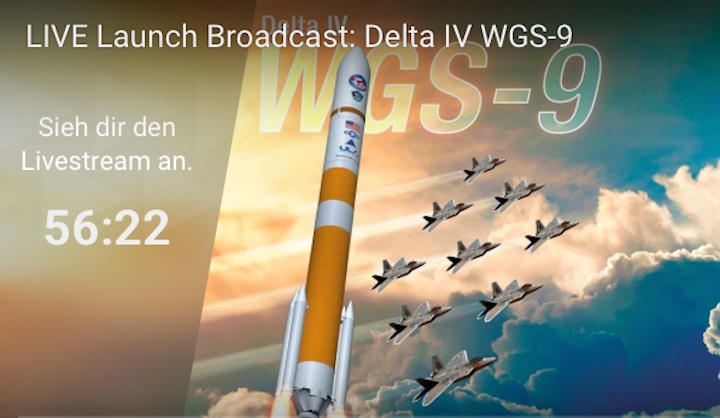
...Update: 19.03.2017 / 0.10 MEZ:
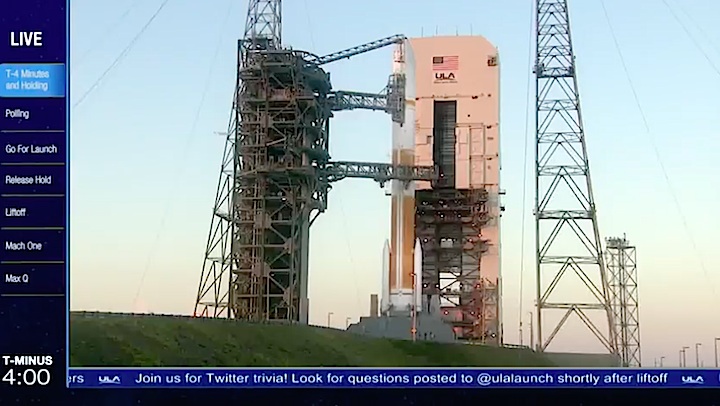
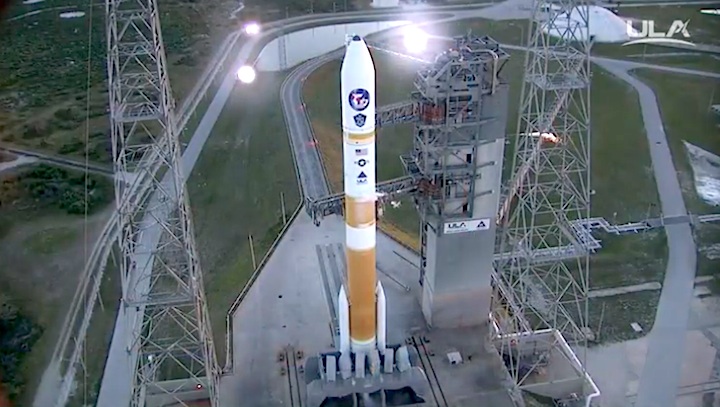
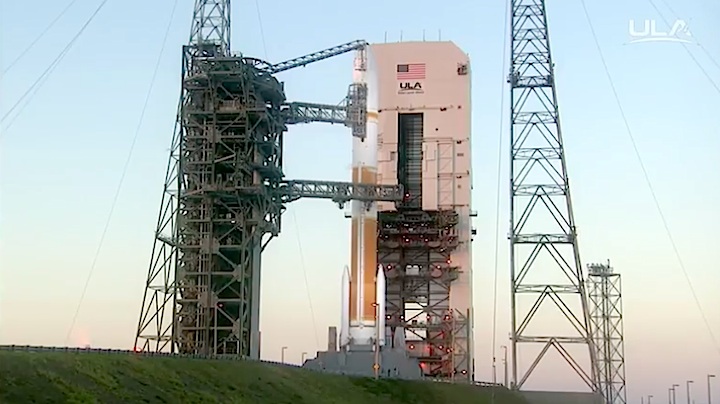



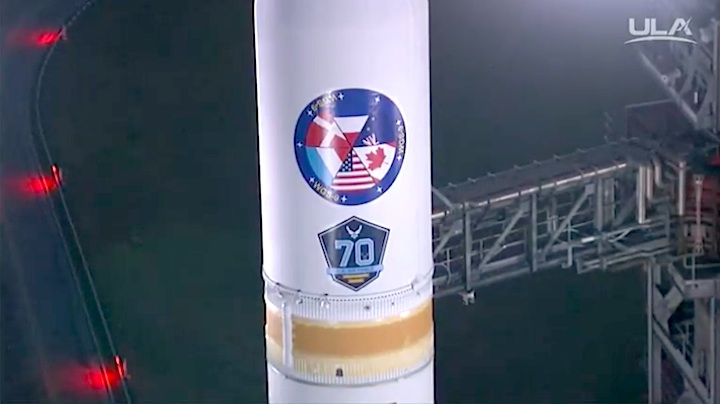
...
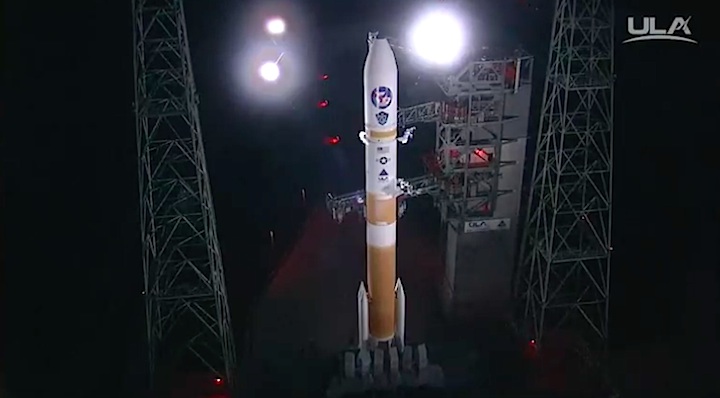

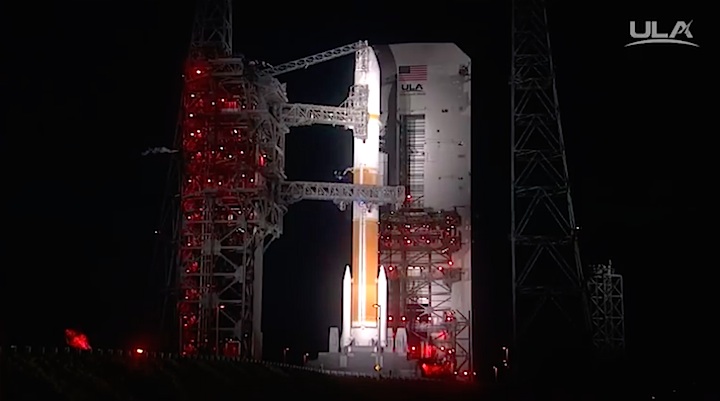
18Mar2017 19:50:34 Eastern
HOLD called
A hold was called due to an alarm on the swing arm. Engineers are investigating the issue.
18Mar2017 20:08:36 Eastern
Issue seems to have been a false alarm
The engineers have concluded that the swing arm alarm was a false alarm and testing has shown this to be working correctly. Waiting for a reconfigured T-0 time.
...
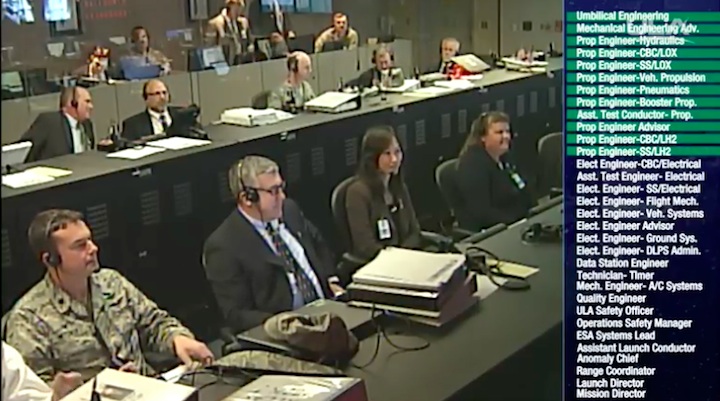
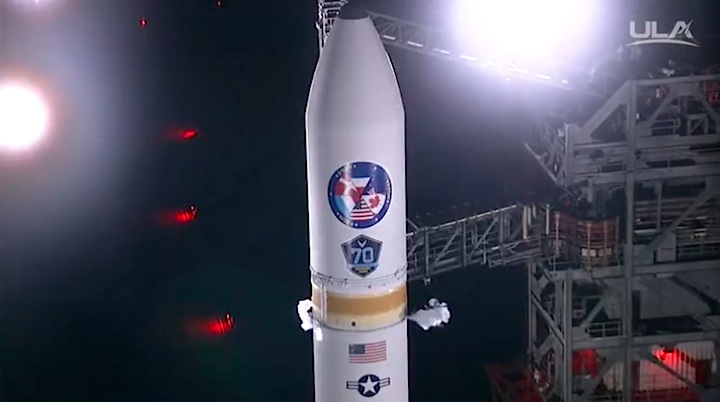
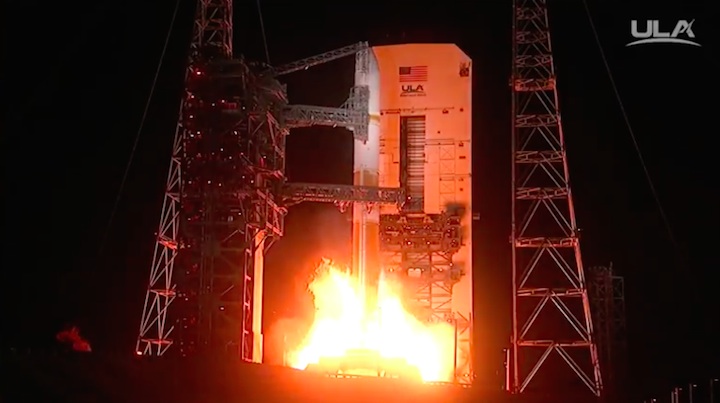
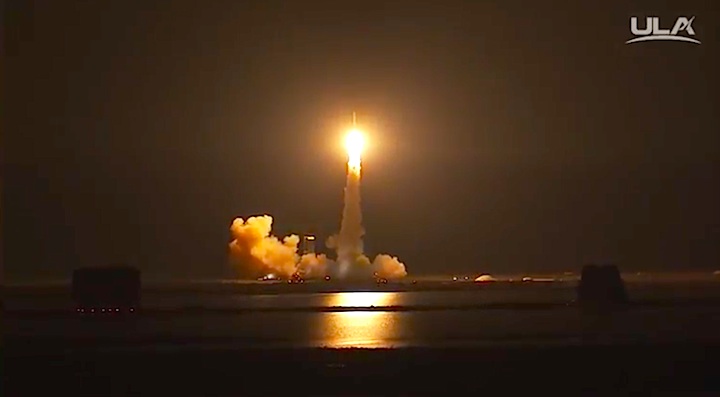
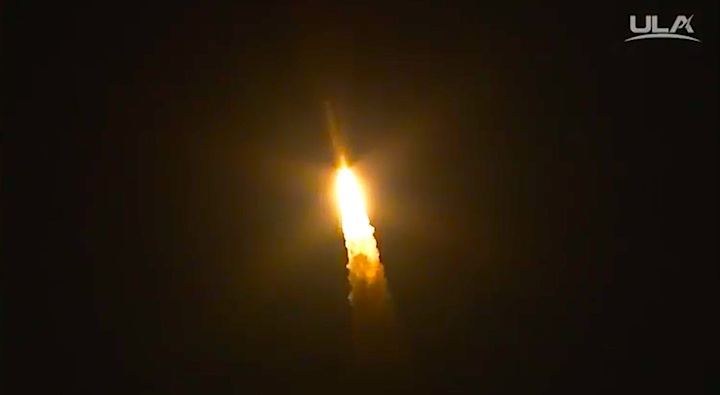


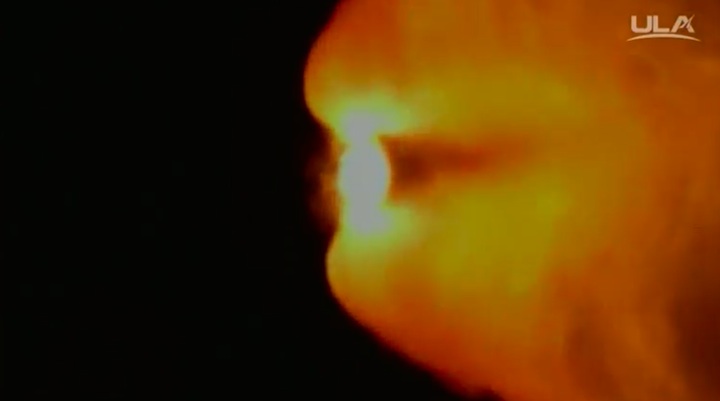
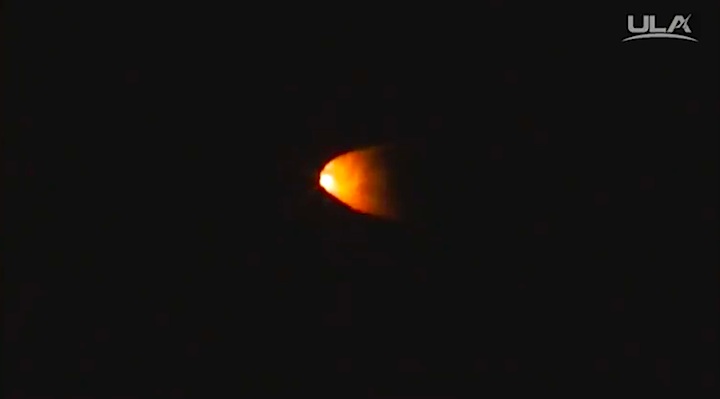
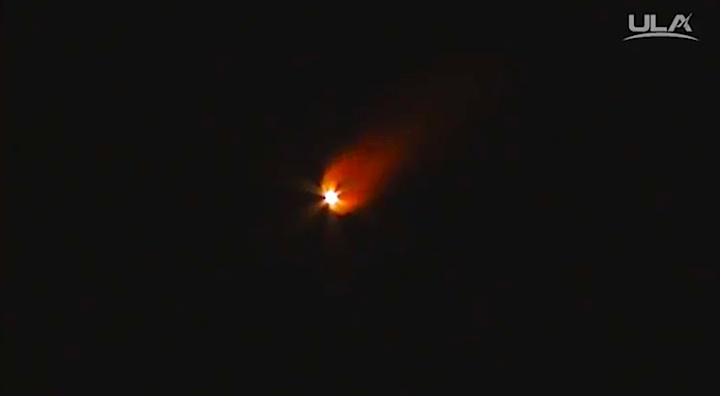
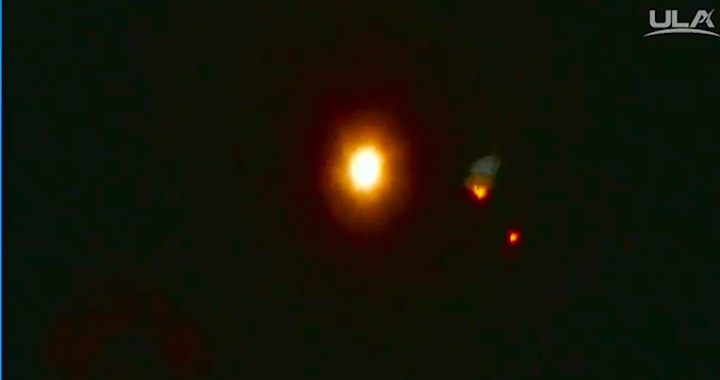
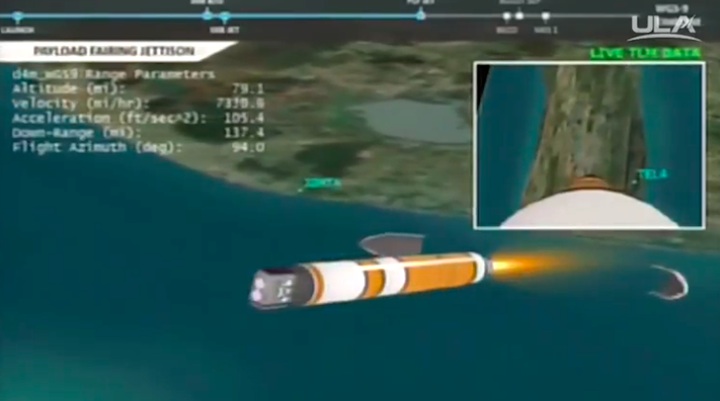
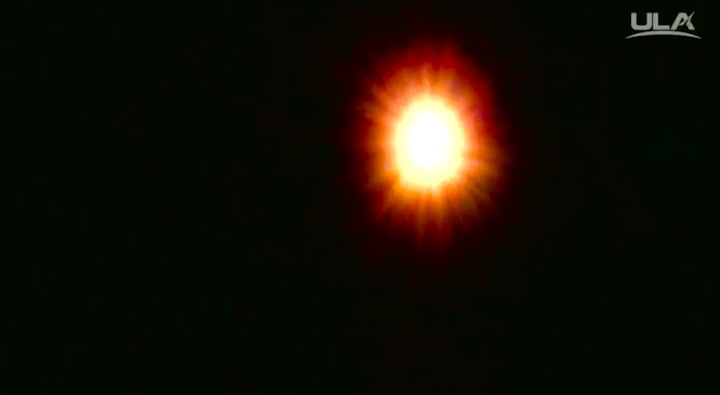

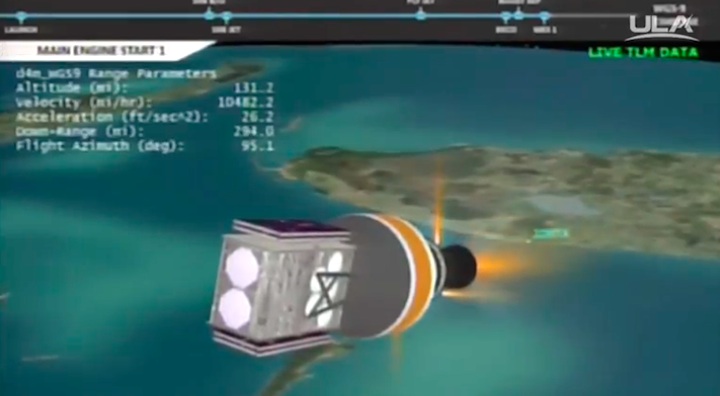

Quelle: ULA
---
Update: 19.03.2017 / 17.15 MEZ
45th Space Wing supports successful Delta IV WGS-9 launch
By 45th Space Wing Public Affairs / Published March 18, 2017
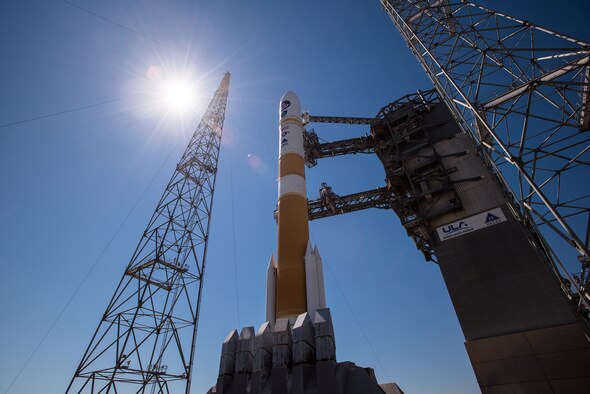
The U.S. Air Force’s 45th Space Wing supported United Launch Alliance’s successful launch of the WGS-9 spacecraft aboard a ULA Delta IV rocket from Space Launch Complex 37 at 8:18 p.m. ET March 18, 2017, at Cape Canaveral Air Force Station, Fla. The Air Force has been breaking barriers since 1947 and the successful WGS-9 launch marks an important occasion for the Wideband constellation as it is a major milestone in a 20-year multilateral partnership. (Courtesy photo/ULA)
The U.S. Air Force’s 45th Space Wing supported United Launch Alliance’s successful launch of the WGS-9 spacecraft aboard a ULA Delta IV rocket from Space Launch Complex 37 here March 18, 2017, at 8:18 p.m. ET.
The Air Force has been breaking barriers since 1947 and the successful WGS-9 launch marks an important occasion for the Wideband constellation as it is a major milestone in a 20-year multilateral partnership.
In January 2012, the United States, Canada, Denmark, Luxembourg, the Netherlands, and New Zealand signed a multilateral Memorandum of Understanding with the United States, agreeing to fund the procurement of the ninth WGS satellite. The U.S. is responsible for funding the launch, operation and sustainment of WGS-9. International partners will receive a proportional share of the bandwidth provided by the WGS constellation based on financial contribution.
The WGS constellation is the highest-capacity military communications system in the U.S. Department of Defense arsenal. WGS supports a wide variety of missions for Combatant Commanders around the world to perform missions, from search and rescue efforts to military operations. Air Force Space Command's Space and Missile Systems Center is the Air Force's center for acquiring and developing military space systems.
The addition of WGS-9 to the constellation will increase speed, reliability, and effectiveness for the warfighter, which enables the U.S. and international partners to more efficiently coordinate on missions in the air, on land and by sea.
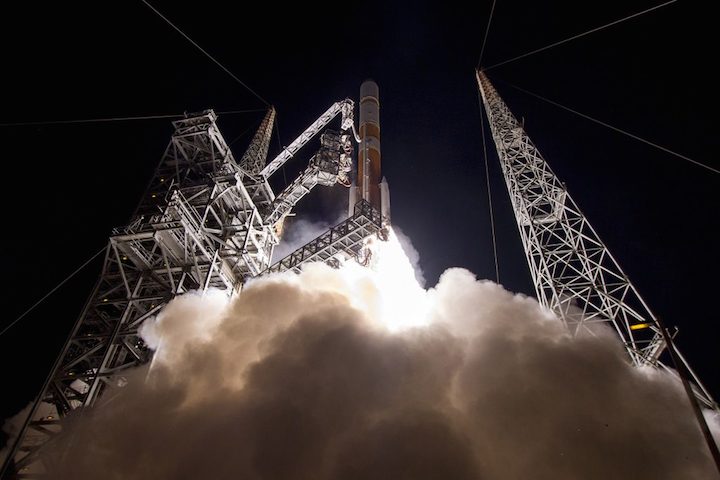
According to Brig. Gen. Wayne Monteith, 45th Space Wing commander and mission Launch Decision Authority, the fourth major launch operation on the Eastern Range this year, and second successful launch in just two and a half days, culminates many long hours and hard work by the entire mission team.
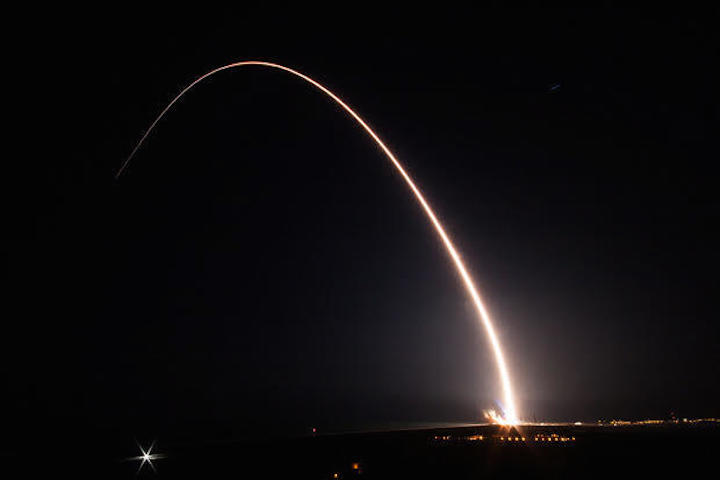
“Thanks to the amazing commitment, focus on the mission, and teamwork the men and women of the 45th Space Wing share with our mission partners at SMC and ULA, we successfully launched the next satellite in the WGS constellation,” he said. “This mission demonstrates the Air Force’s commitment to deliver secure and reliable satellite communications around the globe to U.S. forces and our allies. It also once again showcases why the 45th Space Wing is the ‘World's Premiere Gateway to Space.’”
Quelle: USAF

